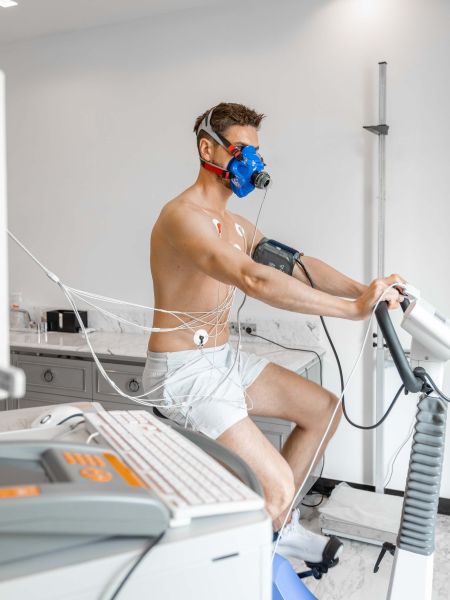The Perfect Training Mix To Improve VO2 Max
How much Zone 2 should you do?
In the world of endurance and fitness optimization, Zone 2 training is a cornerstone for athletes and health enthusiasts alike.
Zone 2 training is the sweet spot of low-to-moderate intensity exercise, where your heart rate hums along at 60-70% of its max.
While it might not be the trendiest workout (yes, HYROX, we see you) the physiological adaptations and subsequent benefits it brings are nothing short of remarkable.
Balancing Zone 2 and VO2 Max Training
Balancing Zone 2 and VO2 Max training is a crucial aspect of optimizing your fitness regimen for both endurance and performance. Here's some things to consider:
-
80/20 Principle: A common approach is to dedicate 80% of training time to Zone 2 and 20% to VO2 max. This prioritizes building aerobic base while still incorporating high-intensity workouts for performance gains.
-
Individual Variation: The optimal split may vary depending on individual goals and training experience. Endurance athletes might favor a higher percentage of Zone 2, while those focused on performance might increase VO2 max work.
By strategically allocating time to each type of training, you can maximize the benefits while avoiding overtraining or burnout.
Zone 2 Training Modalities
Zone 2 training isn't confined to a single activity; it can be achieved through various exercise modalities.
-
Continuous Effort: Activities like running, cycling, swimming, or brisk walking performed continuously at a moderate intensity to maintain heart rate in Zone 2.
-
Polarized Training: Alternating between low-intensity Zone 2 workouts and high-intensity VO2 max intervals within a training cycle. This approach is gaining popularity for its potential to improve both endurance and performance.
Choosing the right mode for you depends on your preferences, goals, and the equipment you can mostly easily access to keep you in your routine.
Monitoring Zone 2 Training Progress
Effectively monitoring your Zone 2 training progress is crucial for ensuring you're reaping the full benefits and avoiding overexertion.
-
Heart Rate Monitor: The most accurate way to ensure you're in Zone 2 is by using a heart rate monitor. Keep your heart rate within the 60-70% range of your maximum heart rate.
-
Talk Test: A simple way to gauge intensity is the talk test. You should be able to carry on a conversation comfortably during Zone 2 training.
-
Perceived Exertion (RPE): Rate your effort on a scale of 1-10, aiming for a 5-6 (moderate effort) during Zone 2 workouts.
-
Tracking Workouts: Keep a log of your Zone 2 workouts, noting duration, intensity, and any perceived changes in fitness or endurance. This helps you monitor progress and adjust your training plan as needed.
By tracking various metrics and paying attention to your body's signals, you can fine-tune your workouts and optimize your results.
Key Considerations
While the benefits of Zone 2 training are clear, it's important to consider several factors to tailor your approach and maximize its effectiveness.
-
Individualization: The ideal Zone 2 training approach depends on your fitness level, goals, and preferences. Experiment with different modalities and splits to find what works best for you.
-
Consistency: Consistency is key to reaping the benefits of Zone 2 training. Aim for regular workouts to build a strong aerobic base and improve overall fitness.
-
Progression: Gradually increase the duration or frequency of your Zone 2 workouts as your fitness improves.
By understanding the principles of Zone 2 training, choosing appropriate modalities, and monitoring your progress, you can optimize your training and achieve your fitness goals effectively.





